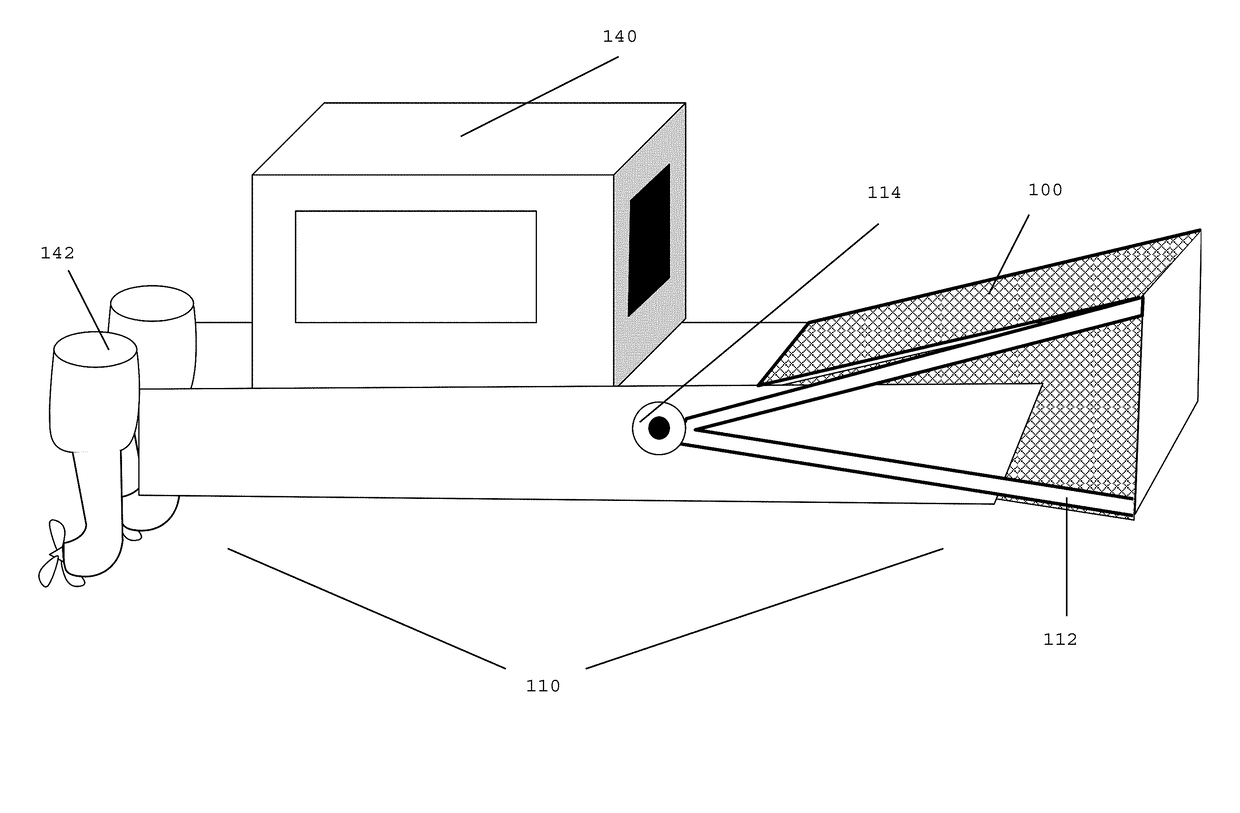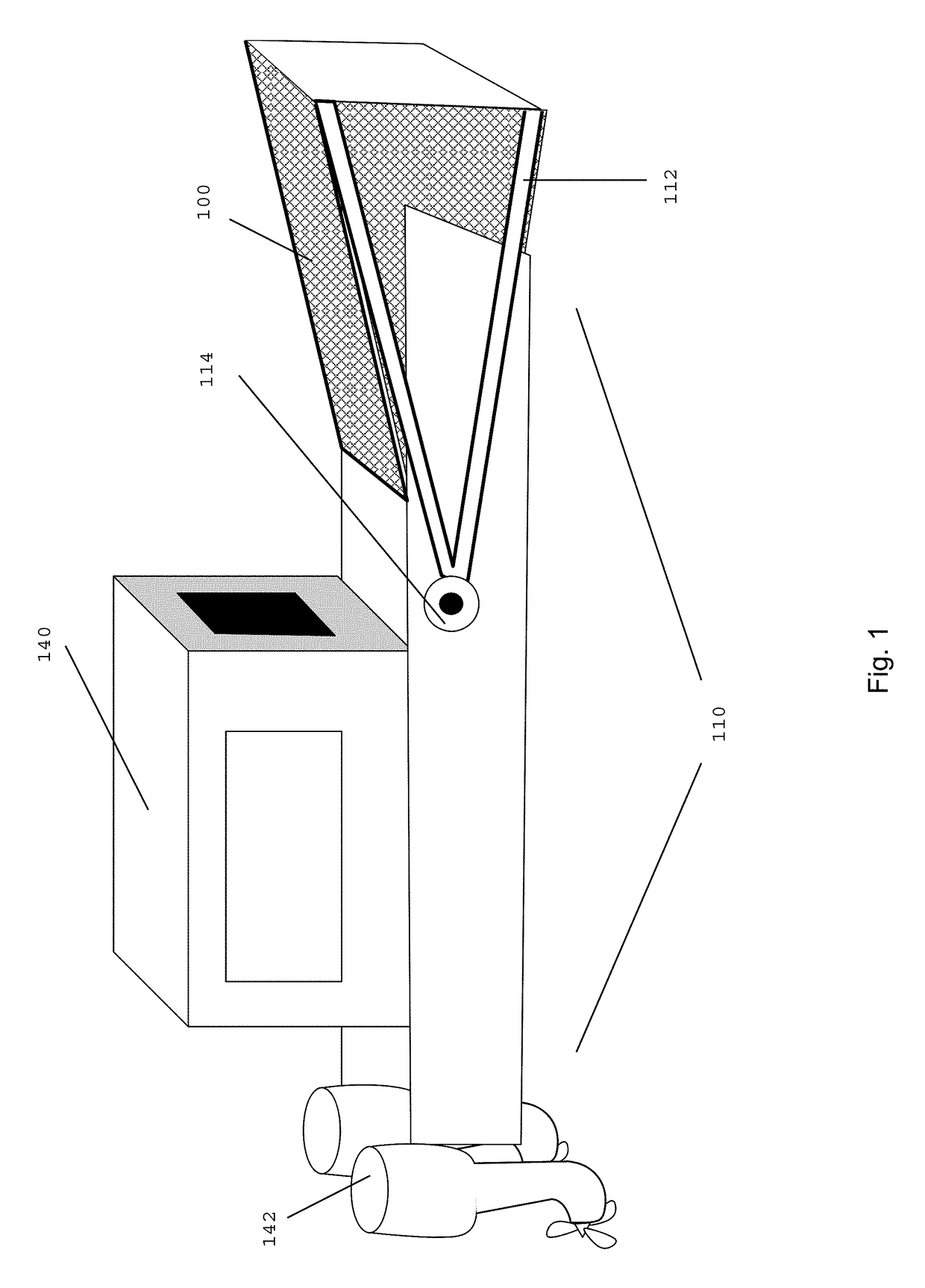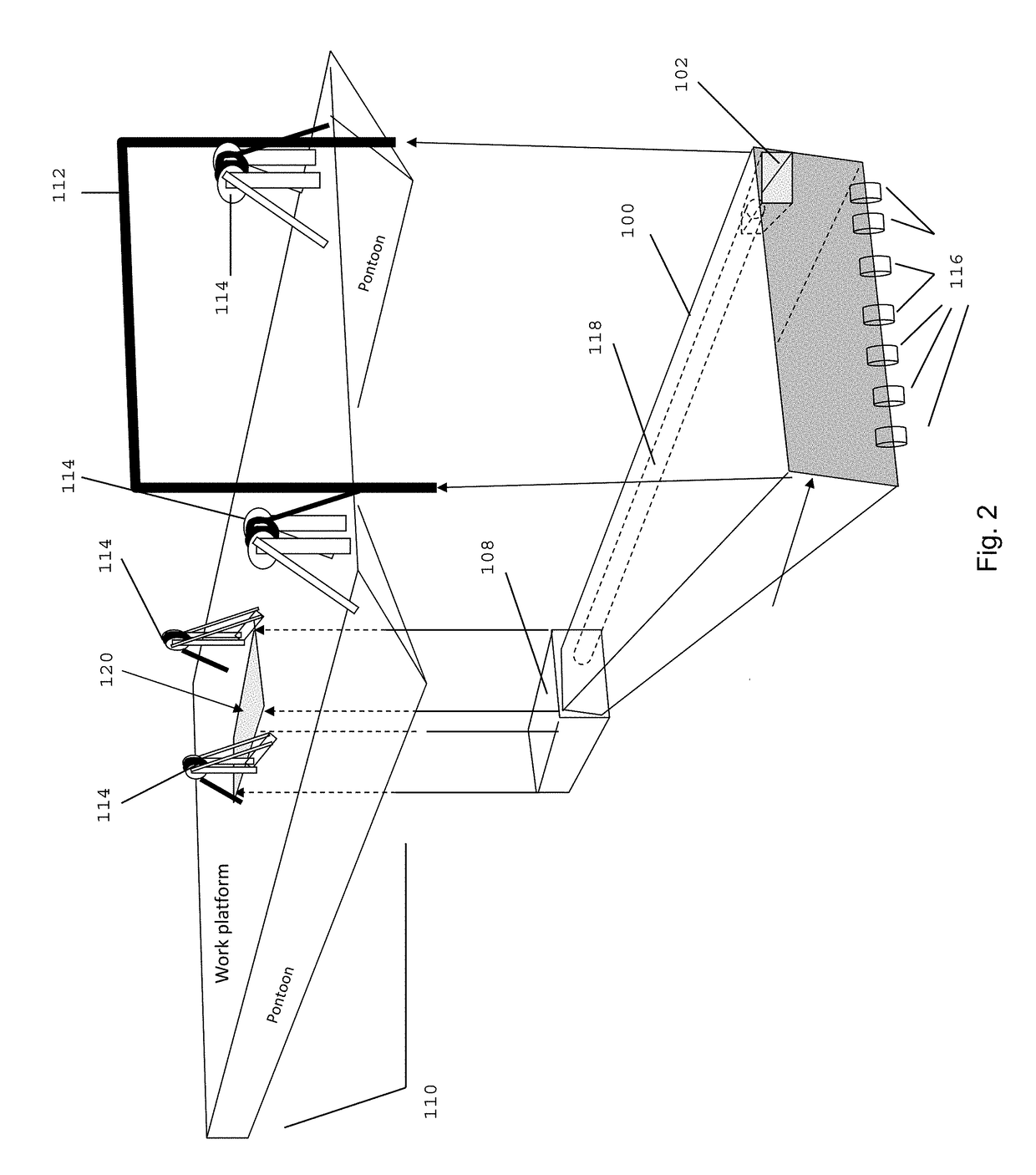[0008]The present invention overcomes the problems of prior systems and can incorporate elements such as: a concentrator net 100 and smaller drift net 102 which can allow for the simultaneous collection of larval species, zooplankton, and phytoplankton as well as larger fish and aquatic organisms; one or more sensors 106 which can record physical habitat data (e.g., depth, turbidity, temperature, dissolved oxygen, conductivity, phytoplankton level, nutrient concentration, total suspended solids, chlorophyll levels) or mapping data and may associate this data with sampling events; and an accessible sample chamber 108, perhaps a live well or live box, which can allow for dip netting, and may have one or more capture net slots or screens which can be pulled individually for rapid sampling, and which also can have a flow-through option to allow for “hands-off” observation of ESA-listed and other sensitive species.
[0012]Another goal is to provide a sampling system where data can be comparable across species and across habitats and so to provide an analysis and data capture possibility where different species and habitat sampling can be easily compared.
[0013]Yet another goal of embodiments of the invention can be to provide the possibility of sampling with reduced, little, or even no disturbance of the species being studied. In keeping with this goal, it is an object to provide a system that can be utilized in a manner that meets regulatory requirements for sensitive species and may even avoid any contact with the species for hands-off sampling.
[0014]The present invention can allow for sampling across both shallow and deep habitats using a single platform which can sample across multiple depths with improved efficiency and habitat sampling capabilities.
[0016]Another broad object of embodiments of the invention may be to deliver captured fish and other aquatic organisms to a sample chamber 108, perhaps a live well or live box, for collection and / or observation while preventing or minimizing injury or mortality during sampling. Thus, a goal of embodiments of the invention may be to prevent the entanglement of organisms which have entered a concentrator net 100 and are being directed to a sample chamber 108, perhaps a live well or live box, for collection or observation. To achieve this, a depth control 114, perhaps a piston, a winch, a gear drive, a worm drive, or a crane, may be designed for raising and lowering a sample chamber 108, perhaps a live well or live box, in relation to the bottom of the sampling platform so as to minimize the angle of incidence between the bottom of a concentrator net 100 and the organisms which have entered such a net. Another goal of embodiments of the invention may be to prevent the escapement of larval species, zooplankton, phytoplankton, and other small organisms once they have entered a smaller drift net 102 in order to successfully deliver them to a sample chamber 108, perhaps a live well or live box, for collection and / or observation. To achieve this, embodiments may include a tube 118 or other impermeable or semi-impermeable structure which may be attached to a smaller drift net 102, perhaps near a net mouth opener brace 112 and / or to the front of a sample chamber 108, perhaps a live well or live box, underneath the sampling platform.
[0018]Yet another broad object of embodiments of the invention may be to minimize downtime during sampling operations. Thus, a goal of the invention can be to provide multiple methods for collection and / or observation of fish and other aquatic organisms while the sampling platform is underway. To achieve this in one manner, a system, such as a capture net slot, may be designed which includes a method for inserting a variable mesh capture net, perhaps an immediately retrievable variable mesh capture net, or screen at the rear of a sample chamber 108, perhaps a live well or live box, to capture organisms. A through-hull access hatch 120 may also facilitate access to a sample chamber 108, perhaps a live well or live box, such as for dip netting. The system may be designed to allow for collection of fish and other aquatic organisms by dip netting whether a sample chamber 108, perhaps a live well or live box, is directly attached to the bottom of the platform or has been lowered to some depth below the sampling platform. Also to achieve this goal in one manner, a system, such as one or more capture net slots, may be designed which enables one or more variable mesh capture nets or screens to be inserted and removed, perhaps immediately, individually and in series near the front of a sample chamber 108, such as a live well or live box, in order to allow for rapid, sequential sampling of aquatic organisms entering a sample chamber 108, perhaps a live well or live box. Finally, to achieve this goal in one manner, a system, such as a sample viewing chamber 134, perhaps with an accompanying camera 136, may be designed which allows for image acquisition of organisms which transit a sample chamber 108, perhaps a live well or live box, in a transparent tube 118 or other impermeable or semi-impermeable structure comprising a viewing chamber after entering through a smaller drift net 102 at the front of the sampling platform, and an additional system may be designed which allows for image acquisition of organisms transiting a sample chamber 108, perhaps a live well or live box, after entering through a concentrator net 100 at the front of the sampling platform.
 Login to View More
Login to View More 


